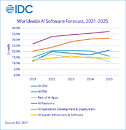
Court Overturns $2.18 Billion VLSI Patent Infringement Verdict, But Still Not Over For Intel
A U.S. appeals court has overturned a staggering $2.18 billion patent infringement verdict against Intel Corporation, initially won by VLSI Technology, marking a pivotal shift in one of the most prominent patent law cases in U.S. history. The 2021 decision by a Texas jury, which found Intel guilty of infringing on a VLSI patent, was reversed by the U.S. Court of Appeals for the Federal Circuit due to insufficient evidence. Additionally, a new trial in Texas has been ordered to determine the appropriate amount Intel owes for infringing a second patent owned by VLSI. This patent-holding company, affiliated with Fortress Investment Group and recently involved in a majority share acquisition by Abu Dhabi's Mubadala Investment Co from Japan's Softbank, has been in multiple legal confrontations with Intel over semiconductor technology patents, which VLSI acquired from NXP Semiconductors.
The legal disputes have seen varied outcomes; Intel deflected a claim for more than $3 billion in damages in a separate Waco jury trial in 2021. However, the same year, VLSI was awarded nearly $949 million from Intel in another patent case by a jury in Austin, Texas. The companies mutually agreed to dismiss another potential multi-billion-dollar lawsuit in Delaware. With Intel's stock experiencing a downturn (-6.05% in the past five days) following the latest court ruling and the scheduled 2024 trial in Northern California, the ongoing legal battles between the two tech entities continue to influence market dynamics and the semiconductor industry at large. Detaining if the patent infringement happened is still relatively complex, as VLSI needs a team of engineers to determine if Intel used any of its patents.
The legal disputes have seen varied outcomes; Intel deflected a claim for more than $3 billion in damages in a separate Waco jury trial in 2021. However, the same year, VLSI was awarded nearly $949 million from Intel in another patent case by a jury in Austin, Texas. The companies mutually agreed to dismiss another potential multi-billion-dollar lawsuit in Delaware. With Intel's stock experiencing a downturn (-6.05% in the past five days) following the latest court ruling and the scheduled 2024 trial in Northern California, the ongoing legal battles between the two tech entities continue to influence market dynamics and the semiconductor industry at large. Detaining if the patent infringement happened is still relatively complex, as VLSI needs a team of engineers to determine if Intel used any of its patents.






































